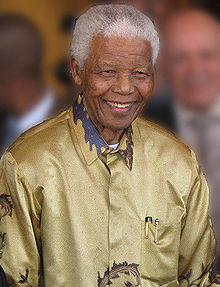U.S. ready to strike Iran in early April
The source said the U.S. had already compiled a list of possible targets on Iranian territory and practiced the operation during recent exercises in the Persian Gulf.
"Russian intelligence has information that the U.S. Armed Forces stationed in the Persian Gulf have nearly completed preparations for a missile strike against Iranian territory," the source said.
American commanders will be ready to carry out the attack in early April, but it will be up to the country's political leadership to decide if and when to attack, the source said.
Official data says America's military presence in the region has reached the level of March 2003 when the U.S. invaded Iraq.
The U.S. has not excluded the military option in negotiations on Iran over its refusal to abandon its nuclear program. The UN Security Council passed a new resolution on Iran Saturday toughening economic sanctions against the country and accepting the possibility of a military solution to the crisis.
The source said the Pentagon could decide to conduct ground operations as well after assessing the damage done to the Iranian forces by its possible missile strikes and analyzing the political situation in the country following the attacks.
A senior Russian security official cited military intelligence earlier as saying U.S. Armed Forces had recently intensified training for air and ground operations against Iran.
"The Pentagon has drafted a highly effective plan that will allow the Americans to bring Iran to its knees at minimal cost," the official said.
Russian Col.-Gen. Leonid Ivashov, vice president of the Academy of Geopolitical Sciences, said last week the Pentagon was planning to deliver a massive air strike on Iran's military infrastructure in the near future.
"I have no doubt there will be an operation, or rather an aggressive action against Iran," Ivashov said, commenting on media reports about U.S. planned operation against Iran, codenamed Operation Bite.
A new U.S. carrier battle group has been dispatched to the Gulf. The USS John C. Stennis, with a crew of 3,200 and around 80 fixed-wing aircraft, including F/A-18 Hornet and Superhornet fighter-bombers, eight support ships and four nuclear submarines are heading for the Gulf, where a similar group led by the USS Dwight D. Eisenhower has been deployed since December 2006. The U.S. is also sending Patriot anti-missile systems to the region.
Russia's Foreign Minister Sergei Lavrov, however, was rather optimistic about the situation and said he ruled out a military resolution of the Iranian nuclear problem.
"We are constantly working on how to resolve the situation around the Iranian nuclear program and other conflicts peacefully," Lavrov said. "This policy is unchanged and we will pursue it in the future."
Russia and the U.S. are two of the six negotiators on Iran's nuclear program, which Tehran says is aimed at generating energy.
sfux - 2. Apr, 20:04 Article 4410x read
















































